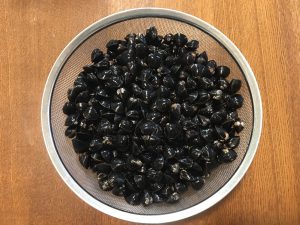Japan’s countryside has its own unique banquet, and Shimane Prefecture is no exception. Tucked away in the nation’s western reaches, this quiet region offers an array of appetising dishes that speak of its land and water.
Here, food is more than a meal — it is memory, belonging, and quiet devotion. Each dish tells a living story, shaped by rivers, seasons, and the patient hands that prepare it. Among the most beloved are Izumo Soba (buckwheat noodles), Shinjiko Shijimi (Corbicula clams), and Ayu (sweetfish) — foods that delight not only the locals, but travellers who come seeking the taste of Japan’s slower side. In Shimane, flavour is not just tasted but felt — a reminder that home can be found in every bite.
Izumo Soba — Deep, Nutty, and Comfortingly Rich
Take a bite of Izumo Soba, and the noodles release a warm, toasty aroma that seems to unfurl across your tongue before melting into a nutty sweetness.
While Tokyo’s elegant Edomae soba and Nagano’s refined Shinshu soba often showcase a pale, delicate colour and smooth texture, Izumo Soba makes no such compromises. It is proudly rustic and unapologetically itself. The secret to its bold, nut-brown colour and profound flavour lies in the Hikigurumi milling method, in which the buckwheat grain is ground with its dark, nutrient-rich hull intact.
This produces noodles rich in both taste and nutrition — a dish that carries the quiet dignity of one once offered to the Tokugawa Shogunate, Japan’s samurai rulers of the Edo period.
While often served hot in a clear, soothing broth, Izumo Soba is also enjoyed Warigo-style — stacked in lacquer boxes, each tier topped with simple condiments — or as Kamaage Soba, where hot noodles are savoured in their own cooking water, their smooth texture gliding gently against the palate, bringing perfect warmth on a cold day.
Shinjiko Shijimi — Brackish-Water Clams of National Importance
The Shijimi clam is a cornerstone of Matsue’s cuisine, thriving in the delicate brackish waters of Lake Shinji and the Ohashi River. This unique environment — where the balance of fresh and salt water shifts with the seasons and the sunlight — cultivates a flavour that is at once pure and deeply rounded.
At dawn, small fishing boats glide quietly across the lake as fishermen draw up their iron joren dredges — long-handled rakes used to gather clams from the sandy lakebed.
Each rhythmic pull brings up glistening black shells, part of the harvest that accounts for over forty per cent of Japan’s total supply.
The most prized species, Corbicula japonica (Shinjiko Shijimi), is cherished for its clean, ocean-kissed sweetness, which spreads softly across the tongue like a breath of sea air.
Locals favour simple, soul-soothing dishes such as miso soup — a satisfying bowl said to restore the body after a long night of sake — while chefs continue to innovate, steaming the clams in sake or folding them gently into rice, each dish reflecting the quiet rhythm of life around the lake.
Ayu — Fragrant, Tender, and Sweetly Ephemeral
Follow the scent of charcoal along the Takatsugawa River in Masuda, often celebrated as one of Japan’s purest rivers.
Here gleams the Ayu, the sweetfish of summer — known as Kōgyo, or “Aroma Fish”, for the subtle fragrance that its diet of river algae imparts to its flesh, a scent often compared to cucumber or watermelon.
When grilled whole over glowing embers (shioyaki), its delicate skin crisps slightly, giving way to tender flesh that yields on the tongue — pure, translucent, and quietly exquisite.
In the Iwami region, locals also savour Se-goshi (thinly sliced raw Ayu) and Kanroni (sweetly simmered whole fish), honouring the fleeting life of the river — a delicate sweetness that vanishes as beautifully as it appears.
The Essence of Shimane
In every flavour, Shimane invites you to return —
to warmth,
to stillness,
to home.
Have you tried these local flavours? Share your thoughts below.
Text: Takashi Saito
Special thanks to Dr Ayumi Mishiro (University of St Andrews)




